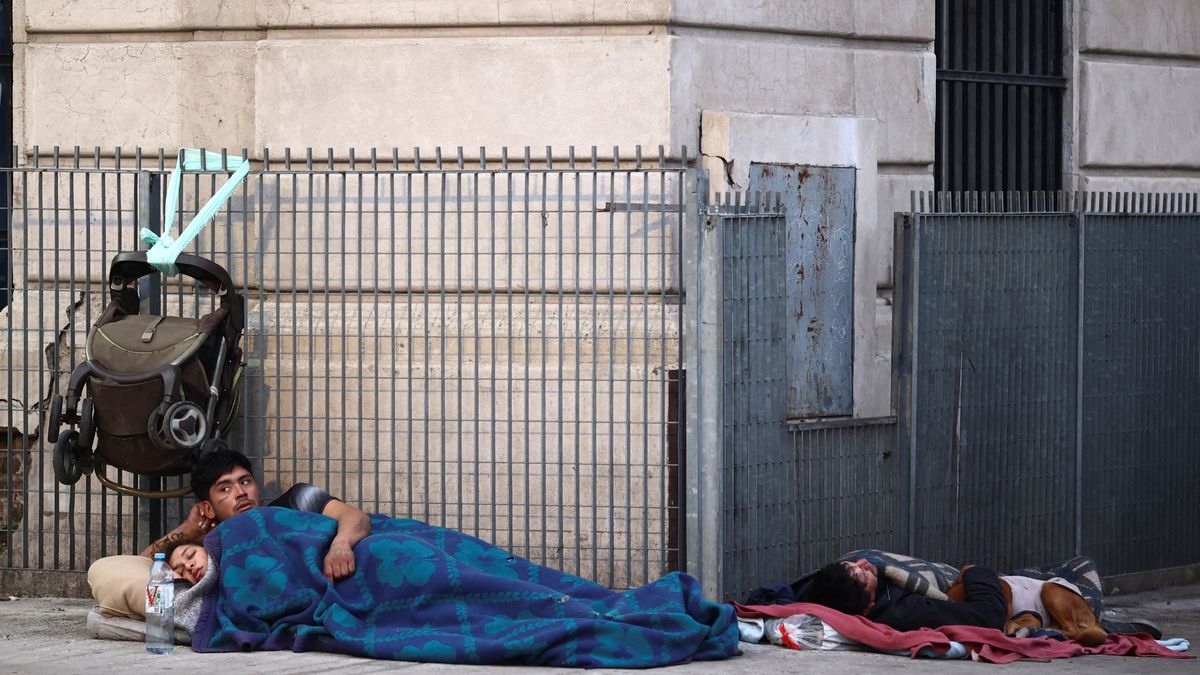According to data revealed by the Argentine Social Debt Observatory of the Argentine Catholic University (ODSA-UCA), the Poverty affected 52% of the Argentine population, while 17.9% lived in extreme poverty during the first half of the year. These are the highest values since 2004.
These numbers correspond to the first half of the year, and show a increase of 41.7% and 11.9% respectively, with what was published by the INDEC last year. In addition, the calculation reflects an average between the first two quarters of the year, where the ODSA highlighted that the poverty reached the 54.9% in January, February and March, while a 49.4% was reached in April, May and June.
In the case of the indigencehe 20.3% of the population was in that state during the first period, and at 15.9% in the second. It should be noted that the data comes from the Permanent Household Survey (EPH).
Embed – https://publish.twitter.com/oembed?url=https://x.com/odsauca/status/1831453115402653768?s=46&t=VpIqun-DPxfhAc4uadSH5w&partner=&hide_thread=false
It is estimated that poverty and indigence during the 2nd quarter of 2024 decreased compared to the 1st quarter, due to the fall in inflation along with the increase in the salaries of formal employees in the private sector, although it was not replicated among public and informal sector workers. pic.twitter.com/DN3cYvrIZq
— Argentine Social Debt Observatory (UCA) (@ODSAUCA) September 4, 2024
The main factors of these levels of poverty and indigence
The director of the observatory, Augustin Salviasaid: ”The recovery was mainly in the working middle classes, the professional technical segment, with certain qualifications, in dynamic branches. Meanwhile, workers in the consumer market, industry and construction did not receive wage increases in the same proportion as inflation due to the fall in the level of activity.”
He also pointed out that the loss of jobs in the informal sector of the economy and low wages in the private sector are two crucial factors in the high levels of poverty and indigence. In addition, those who work in this sector have a salary below the basic basket.
”The sector of poor informal workers, who fell into destitution and who depend heavily on social programs, did not recover. It is in this context that Greater inequality is observed between the different working sectors,” he added.
Finally, he explained that the fall in inflation was accompanied by an increase in the salaries of formal private sector employees, who recovered only part of what they lost in January, February and March. Meanwhile, in the case of public sector and informal workers, the recovery was less.
Alarming figure: more than 5 million retirees and pensioners are below the poverty line
The figure is alarming and reflects the Critical economic situation faced by retirees in Argentinawho became one of the sectors most affected by the strong inflation of the first half of the year.
According to the Office of the Ombudsman for the Elderly, the basic basket of a retiree would be around $800,000 per month, while the minimum retirement in August 2024 was $225,497.54. Even with the $70,000 bonus, which raises income to $295,000, it is still a figure far below what is needed in the country to cover basic expenses.
However, this situation is getting worse as more and more people are joining in. 500,000 people receiving the Universal Pension for the Elderly (PUAM)which is equivalent to 80% of the minimum retirement, and One million people with non-contributory pensions who earn only $220,000 per month.
In this sense, Eugenio Semino, defender of the elderlyrevealed that the economic situation of retirees is observed in the malnutrition that many of them suffer from.
He even stated that between 80% and 90% of older adults suffer from hypertension and cholesterol problems, but Their pensions prevent them from accessing the food they need to take care of their health. In addition, this group faces difficulties in buying medicines and paying for basic services such as heating, which contributes to a general deterioration in their quality of life.
Source: Ambito




